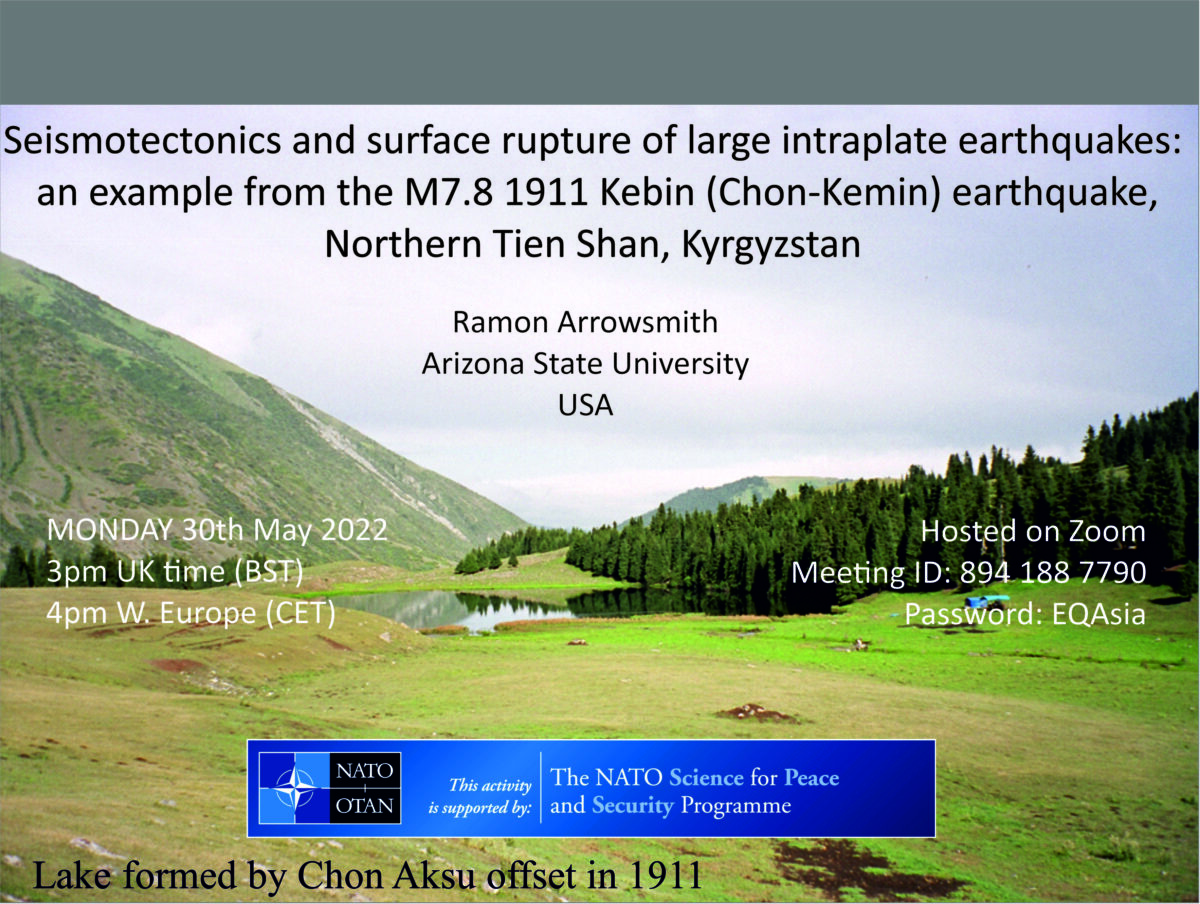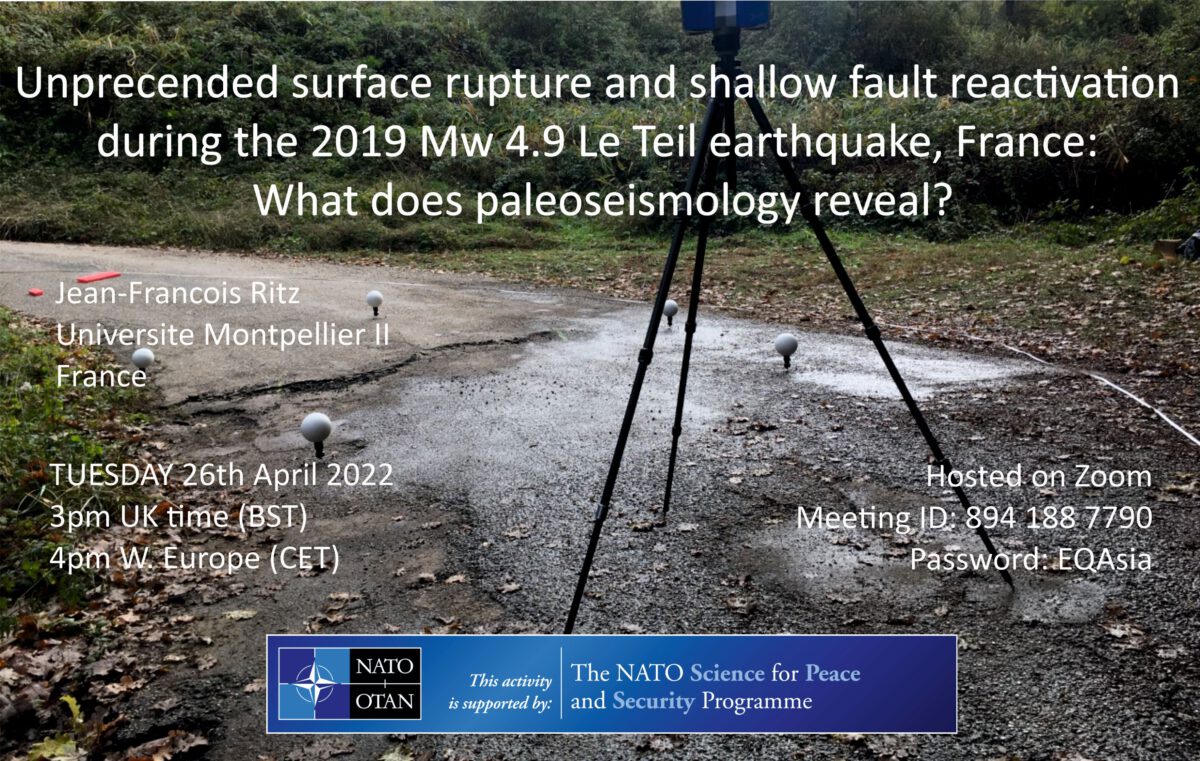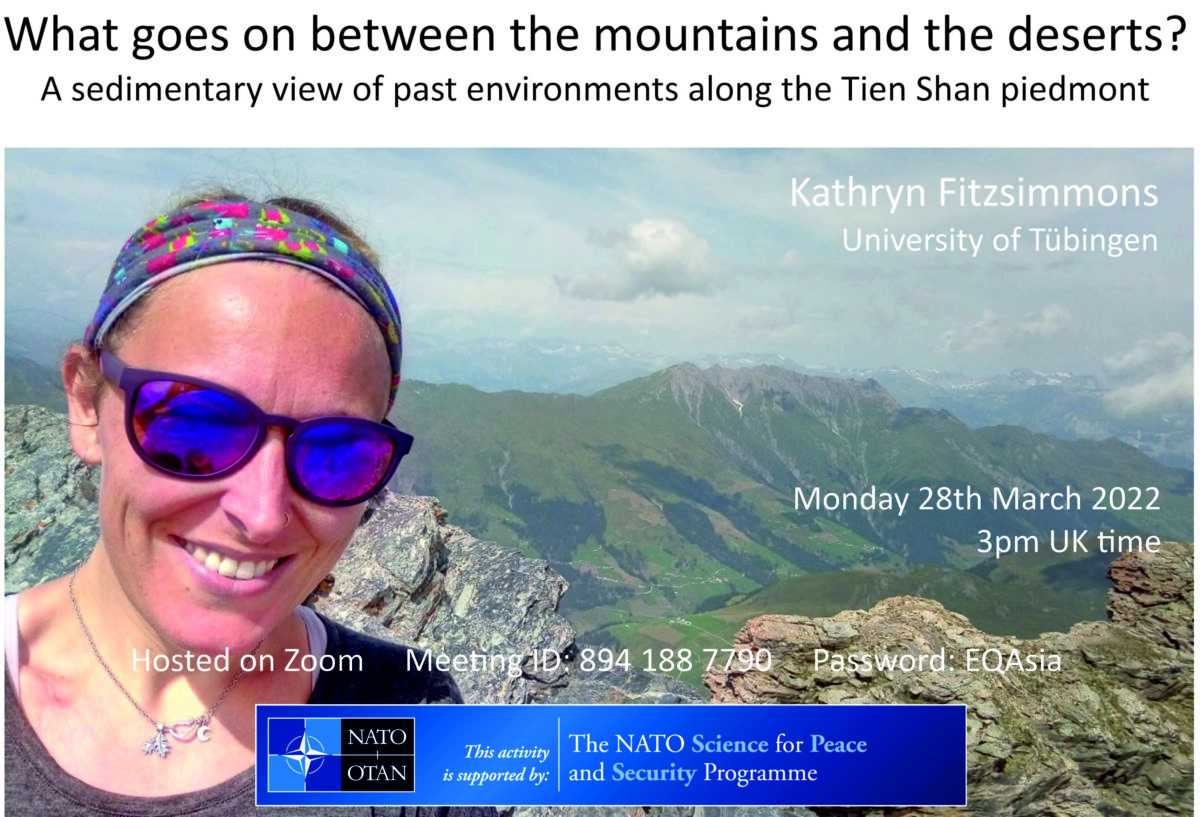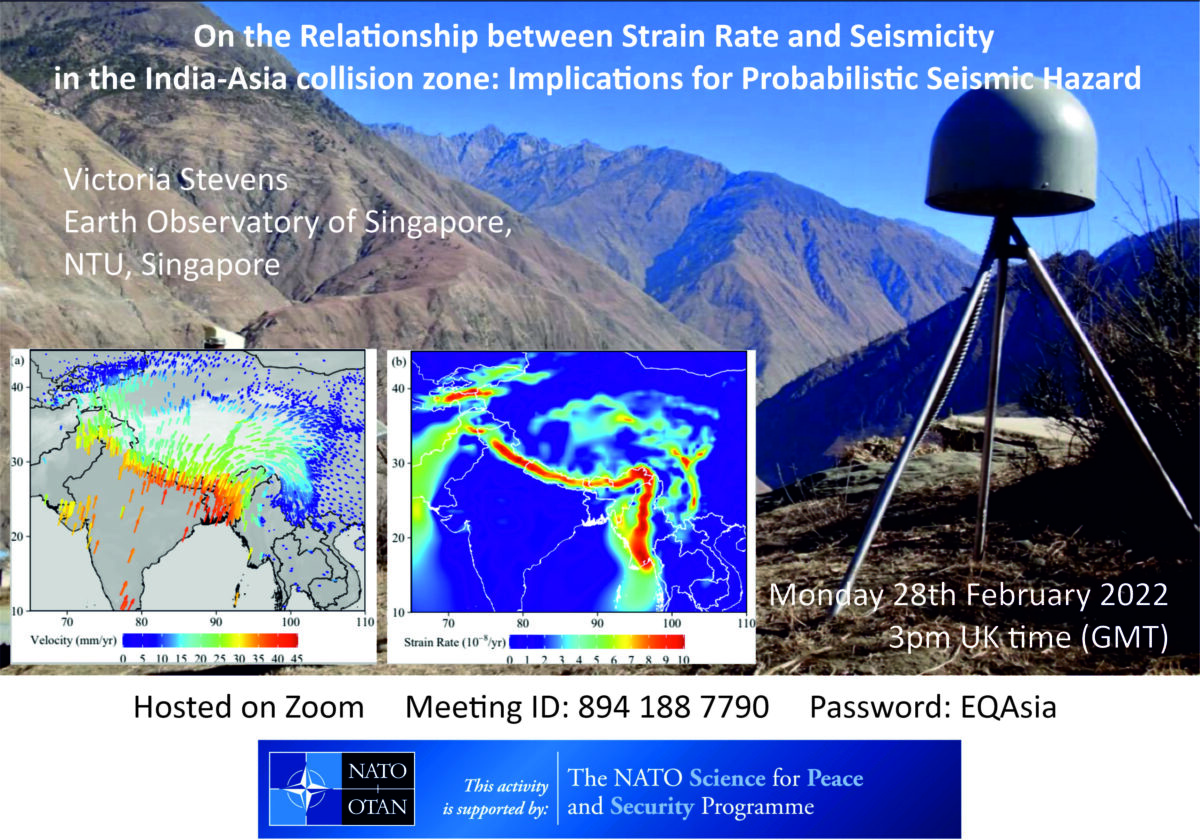On 30 May, Ramon Arrowsmith from Arizona State University talked about Seismotectonics and surface rupture of large intraplate earthquakes: an example from the M7.8 1911 Kebin (Chon Kemin) Earthquake, Northern Tien Shan, Kyrgyzstan in the framework of our NATO-funded project SPS G5690 – “Earthquake Hazard and Environmental Security in Kazakhstan and Kyrgyzstan”. In case you missed Ramon’s presentation, here’s the video.
We’re going to have a summer break and commence our webinar series in autumn. Watch this space for future talks, which take place always on the last Monday of every month, and follow us on Twitter for updates: https://twitter.com/QuakesCentAsia.





